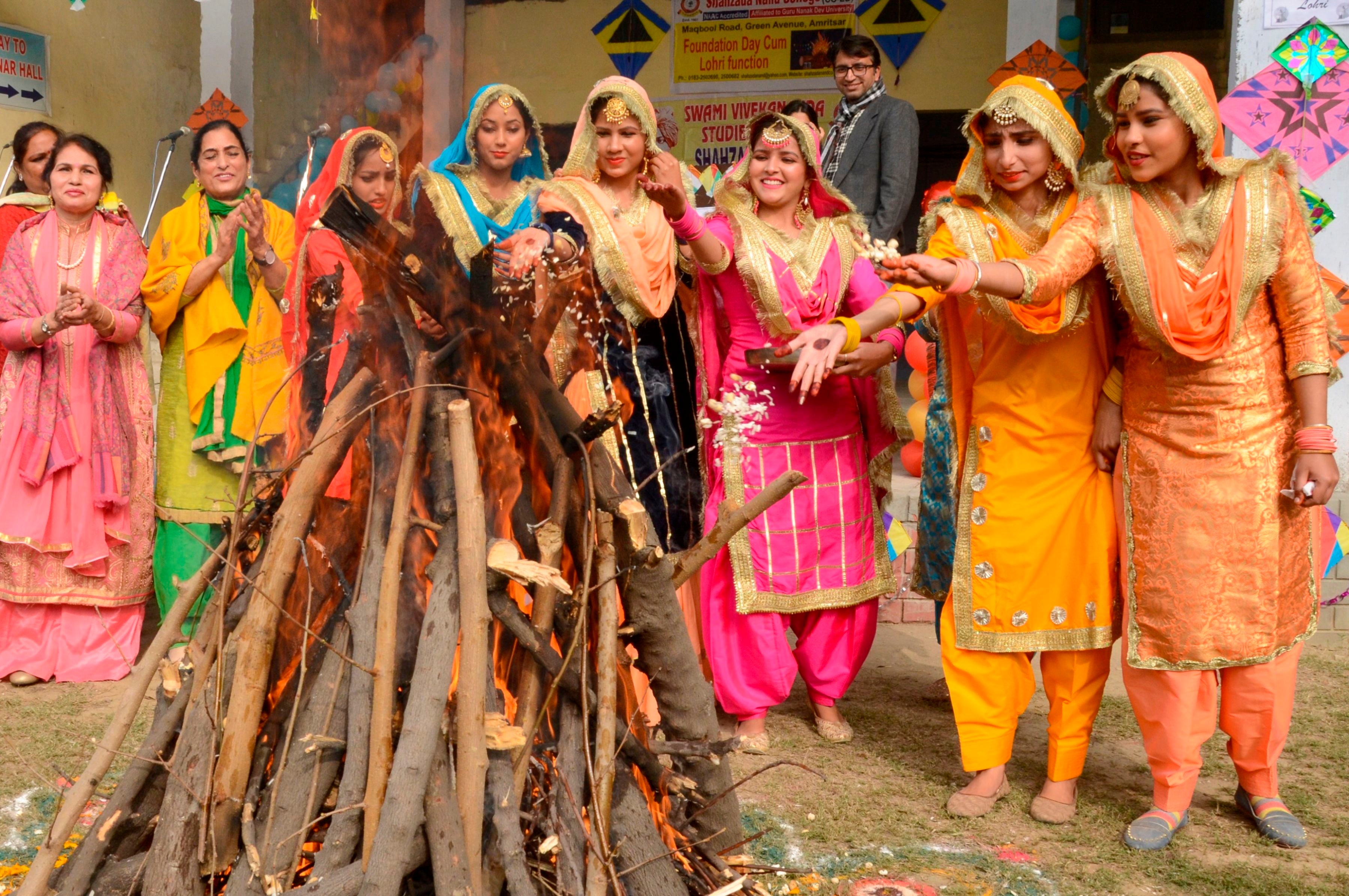Lohri: A Harvest and Joy Festival



Origins and History of Lohri
The origins of Lohri are not very clearly recorded, though it has very strong roots in agrarian societies, especially in Punjab and Haryana. Traditionally, Lohri has been associated with the harvest of rabi crops, mainly sugarcane, wheat, and mustard. Its celebration is a sign of thanking the Sun God and nature for the bountiful harvest.
Historical Background
Lohri's history can be traced to ancient agrarian practices. Historically, communities in the northern plains of India have celebrated the winter solstice as a turning point, marking longer days and the gradual retreat of winter. The festival also finds mention in folklore and oral traditions. It is often linked to various legends and tales, such as:
- Dulla Bhatti Legend: Dulla Bhatti was a legendary hero of Punjab who rebelled against the Mughal Emperor Akbar and is celebrated for his acts of kindness and bravery. He is often referred to in Lohri songs, and his tales of helping the downtrodden, especially women, form a crucial part of the festival’s folklore.
- Connection with the Sun God: Lohri is closely associated with solar worship. The festival comes before Makar Sankranti, when the sun moves into the zodiac sign Capricorn, marking the end of winter and the beginning of longer days. The bonfire lit on Lohri is an offering to the Sun God.
- Puranic Significance: The festival is sometimes associated with the Hindu mythological tales of Prahlad and Hiranyakashipu in which the bonfire represents the victory of good over evil.
Importance of Lohri
Lohri has multidimensional importance, amalgamating agricultural, cultural, and spiritual aspects.
- Agricultural Significance: Lohri is primarily a harvest festival. It celebrates the yield of rabi crops, particularly sugarcane, which plays a central role in the festivities. Farmers express gratitude for the harvest and pray for prosperity in the coming year.
- Seasonal Transition: The festival heralds the end of the bitter winter and the onset of warmer days. The change is important for the agricultural community since it ushers in a new cycle of growth and sustenance.
- Cultural Significance: Lohri promotes social bonding. Family members and neighbors come together, strengthening social relationships. It's also a day to celebrate the beginning of marriages, children, and other special events.
- Spiritual Aspect: Many of the rituals in this festival include prayers for abundance, health, and prosperity. The bonfire is viewed as a purifier—it symbolizes the destruction of something negative and the welcoming of something positive.
How Lohri is Celebrated
Lohri is a vibrant festival marked by unique rituals, music, dance, and feasting. While the core essence of the celebration remains consistent, variations exist across regions and communities.
Preparations for Lohri
Preparations for Lohri begin days in advance. People clean and decorate their homes, shop for new clothes, and prepare traditional sweets and snacks. The markets become full of activity, selling items like sesame seeds, jaggery, peanuts, and rewari, which are central to Lohri festivities.
The Bonfire Ritual
The bonfire is the heart of Lohri celebrations. People gather around it in the evening and offer sesame seeds, jaggery, sugarcane, and popcorn to the fire chanting traditional songs. This act is symbolic of offering thanks to the elements of nature and the Sun God.
Modern-Day Celebrations
Lohri in recent years has not remained the same. Changing lifestyles and rapid urbanization have slowly impacted its celebration.
- Eco-Friendly Celebrations: With growing environmental awareness, many communities opt for smaller, symbolic bonfires or use eco-friendly materials.
- Global Appeal: With Punjabis settling all over the world, Lohri has acquired international status. Countries such as Canada, the UK, and the US host grand Lohri celebrations organized by Punjabi diaspora communities.
Significance of the Folk Songs in Lohri
Traditional folk songs are an integral part of Lohri celebrations, reflecting the cultural ethos and history of Punjab. Many of these songs extol the spirit of the festival by referring to tales of Dulla Bhatti, the change in seasons, and the joy of the harvest.
Popular Lohri Songs: Some traditional Lohri songs, passed down through the generations, still strike a chord with people.
- "Sundar Mundriye": Perhaps the most iconic Lohri song, it narrates the story of Dulla Bhatti and his acts of bravery.
- "Tera Kaun Vichara": A song reflecting gratitude and joy.
Conclusion
Lohri is more than just a festival; it's a celebration of life, nature, and community. Its rich history, vibrant rituals, and cultural significance make it one of the most cherished festivals in India. As it continues to evolve, Lohri remains a timeless symbol of gratitude, joy, and togetherness, uniting people across regions and generations.


If you have any doubt, please let me know...